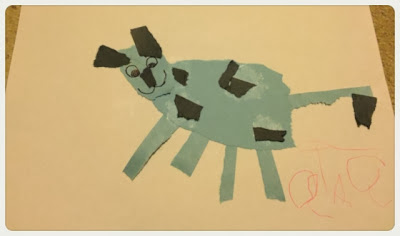You can tell your preschooler about his/her results by giving verbal or visual feedback:
-Verbal Feedback can be using simple statements about your preschooler's performance. For example: "Jonas, I have noticed an improvement in letter writing but you needs lots of practice." That is much better than saying: "Good Job!" or "Needs Work". Giving specific feedback after an activity is the way to go. Talking to your child about learning is an important part of their developmental growth.
-Visual Feedback can be in the form of a happy or sad face, a growth chart/graph , a checklist with pictures, or instructions with pictures and words. Visual assessment is a very important part of learning. Emotions play a strong role in sending the message that something is great or still needs improvement. On the other hand, graphs or charts are a great resource to show growth in a particular learning skill or knowledge. Checklist and visual instructions are a great self-assessment tool also.
Giving out a grade is NOT the most effective form of feedback. When you give visual or verbal feedback, you are targeting skills, knowledge and attributes of the lesson. It helps the learner see WHERE he or she needs improvement and HOW they need to improve.
Documentation
In order to give effective feedback, you need to document behavior. Even as a parent, it gives you time to reflect on your teaching style. This can serve as a great assessment tool as you go back everyday to look for patterns in behavior. This form of assessment is called Assessment of Learning. It is ongoing and provides you with your child's strengths and weaknesses. So that you build on his/her weaknesses by working with the strenghts (i.e. if your child loves pictures then print out lots of visual cues for him/her to learn the lesson effectively.) That's the reason why I love using Gardner's Multiple Inteligences. They target varied needs that benefit the learner immensely.
Verbal and Visual feedback is a form of Assessment for Learning as it informs the learner about their learn about themselves. It is unique for each learner and guides them to take charge of their own progress.
On one last note, mistakes are a form of learning. It is very important to remind your child and yourself. Kids learn by doing and it is very important for their developmental growth to make mistakes.
Enjoy everything you do!
Annie


































